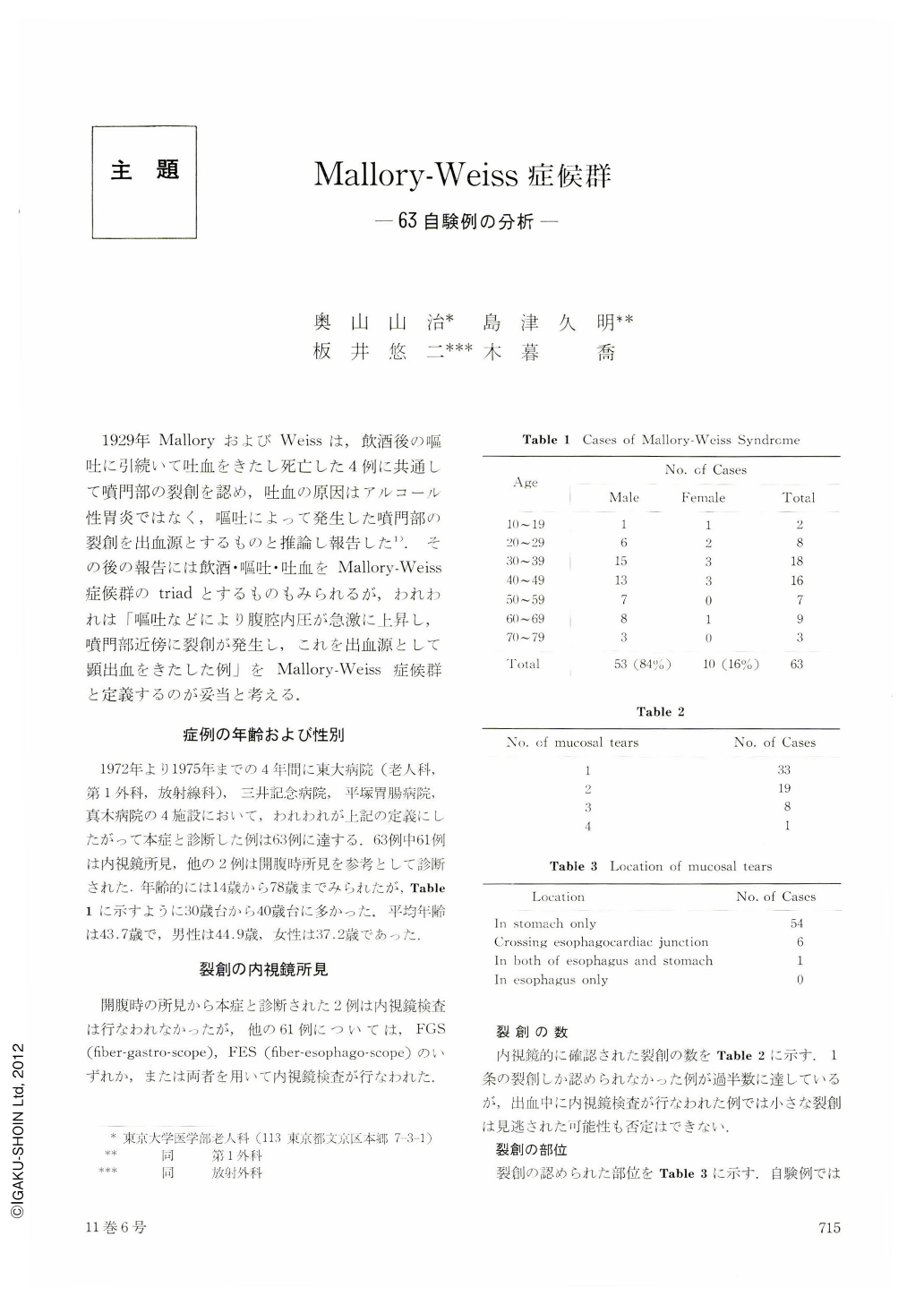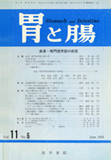Japanese
English
- 有料閲覧
- Abstract 文献概要
- 1ページ目 Look Inside
- サイト内被引用 Cited by
1929年MalloryおよびWeissは,飲酒後の嘔吐に引続いて吐血をきたし死亡した4例に共通して噴門部の裂創を認め,吐血の原因はアルコール性胃炎ではなく,嘔吐によって発生した噴門部の裂創を出血源とするものと推論し報告した1).その後の報告には飲酒・嘔吐・吐血をMallory-Weiss症候群のtriadとするものもみられるが,われわれは「嘔吐などにより腹腔内圧が急激に上昇し,噴門部近傍に裂創が発生し,これを出血源として顕出血をきたした例」をMallory-Weiss症候群と定義するのが妥当と考える.
症例の年齢および性別
1972年より1975年までの4年間に東大病院(老人科,第1外科,放射線科),三井記念病院,平塚胃腸病院,真木病院の4施設において,われわれが上記の定義にしたがって本症と診断した例は63例に達する.63例中61例は内視鏡所見,他の2例は開腹時所見を参考として診断された.年齢的には14歳から78歳までみられたが,Table 1に示すように30歳台から40歳台に多かった.平均年齢は43.7歳で,男性は44.9歳女性は37.2歳であった.
Investigation of reported cases for Mallory-Weiss syndrome has led us to define it as “gross hemorrhage originating from lacerations near the cardia due to sudden rise in intraabdominal pressure brought about by vomiting, etc.”
Sixty three cases of Mallory-Weiss syndrome, based on this definition, were encountered over the past 4 years. Most of them were easy to control and there was not a single case of mortality. X-ray diagnosis is often difficult. Pertinent history taking is more rewarding, and the easiest and most accurate way to the diagnosis is endoscopy at the earliest opportunity. Most of lacerations were seen in the gastric mucosa in the grooves between the mucosal folds. There were two kinds of lacerations : lacerations linear from the outset and spindle-shaped lacerations showing gaping wounds. In the former the lamina muscularis mucosae is mostly free from laceration. We have classified these mucosal tears into 4 stages : bleeding, open, linear and scarring stage. Clinically laceration can be considered healed when it has reached the linear stage. The majority of our experienced cases showed the linear stage within 2 or 3 weeks. As a whole this disease entity heals within a short time. The most important factor affecting the prognosis is the amount of hemorrhage. When bleeding is stilled one way or another, there is no indication for surgical exploration.
It is not uncommon to come across lacerations in the remnant stomach. They occur most often on the anterior and posterior walls near the sunk-sutured anastomotic stoma.
Most cases of Mallory-Weiss syndrome took place through esophageal hiatus hernia due to sudden rise in intraabdominal pressure, but there were some probably caused by a transient condition such as prolapse of the gastric mucosa into the esophageal lumen.

Copyright © 1976, Igaku-Shoin Ltd. All rights reserved.


